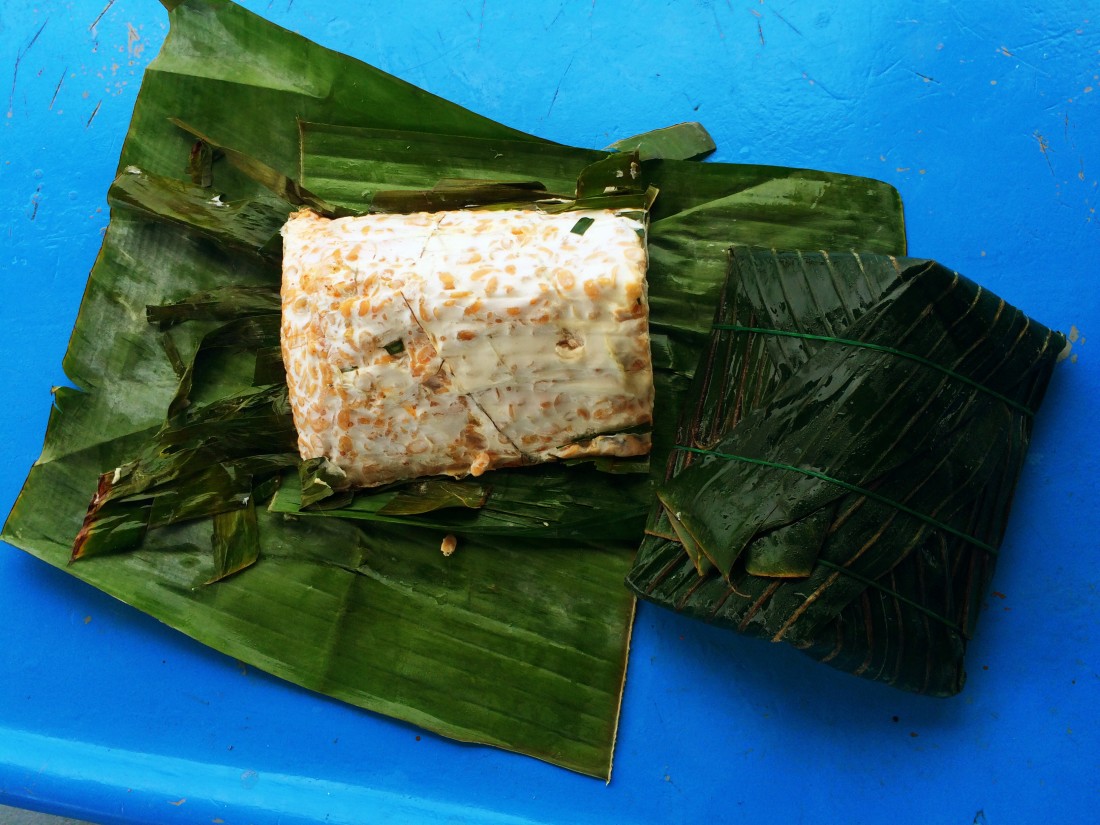
Tempeh in the Tropics
Soy, friend or foe? Diverse, hardy and affordable, soybeans are a staple ingredient in many Eastern cultures. What must have been a good thing, the West adopted the use of soy with welcome arms, commercialised it and took the use of soybean to a whole new level.
A modern food corporations objective is to make their products palatable, have a long shelf life and of course to be profitable. So where does the nutritional value of food fit into this list of priorities or has this aspect been skipped over entirely?
After a soy bean has been processed and made its way into your soy milk, fake sausage, protein powder, health bar and countless other packaged products, it has been completely altered from its natural state. Firstly, the majority of soy beans in todays food chain are genetically modified. The beans are then washed with solvents to remove their oils and processed to create “soy protein concentrate”. This product goes through a further process called extrusion to then become “soy protein isolate”, and it’s this ingredient (not a real food ingredient!) which eventually finds its way into the western food chain. A little bit different to how the ancient cultures prepared and consumed their soy.
Now I will take you back to the origins of one particular soy product that if prepared in its traditional, organic way, is highly nutritious and quite the earthy, nutty flavour.
A recent trip to Indonesia involved a two week boat trip around the tropical and isolated Mentaiwais (Men-ta-why) Islands. With no place for food stops, the freezer was prepared and loaded with nutrient dense foods to satisfy the energy burning surfers on board. So it was fitting on about day 10 that the chef on board pulled out home made “cakes” of tempeh (tem-pay) delicately wrapped in banana leaves. Sliced finely and shallow fried, I can say it was a delicious afternoon snack and made quite the combination with cold, local beer!
Tempeh originated in Central Java, Indonesia and the earliest known reference to its consumption is all the way back in 1815. Made from soybean, tempeh is prepared by firstly dehulling the soybean and then adding a starter culture (called ragi tempeh) to facilitate fermentation of the beans. Wrapped in banana leaves, the tempeh is then left for a minimum of 3 days to ferment. The culture used is a type of mould and if you get your hands on some properly prepared tempeh, you can sometimes see the grey spores. Sounds terrible doesn’t it? Well actually the health benefits of eating fermented foods are well documented especially for their ability to promote healthy microbiome (bacterias) in the digestive tract, therefore tempeh can be considered a functional food.
With a good hit of vegetable protein, Vitmain K, B12, magnesium, calcium, potassium and flavanoids it is no wonder this culinary dish has lasted the test of time.
So if you are lucky enough to find yourself in Indonesia or other Asian countries such as Japan, China and the Philipines, make sure you try tempeh in its traditional way for an authentic soy experience. If you are not in Asia and keen to include the best quality soy products in your food intake, my advice is to avoid all processed products containing soy protein (concentrates, hydrolyzed and isolates).
Choose organic to ensure GMO free and select fermented soy foods such as tempeh, tamari and fermented tofu to ensure the true benefits of the soy bean and enjoy its nutty, earthy flavour! My favourite is to finely slice tempeh, marinate in tamari, grated ginger and turmeric and fry in coconut oil. Yum.



Sorry, the comment form is closed at this time.